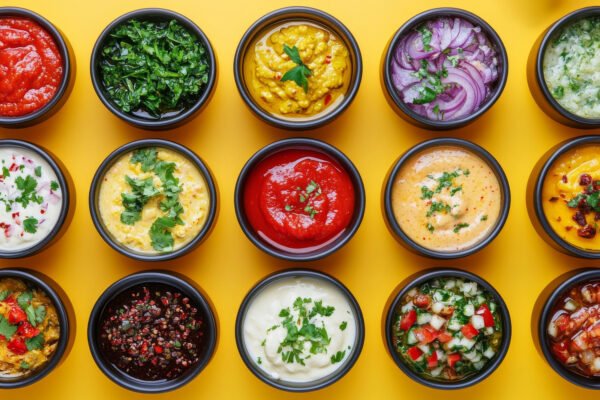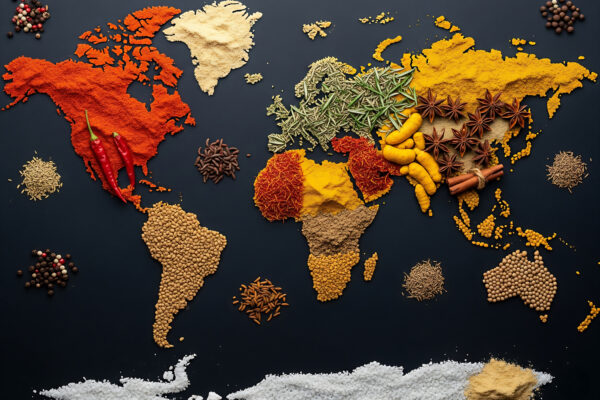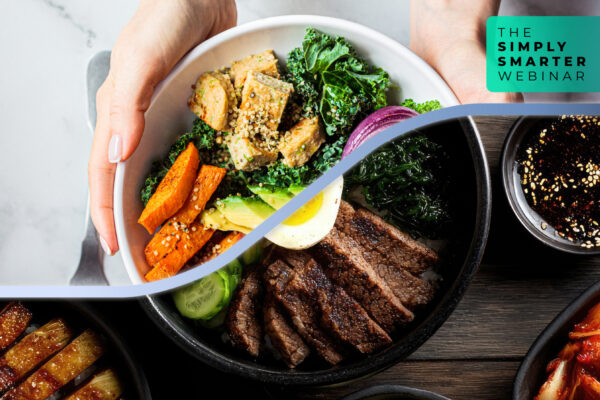Menu trends aren’t just about what’s hot — they’re about what works. The restaurants that grow market share, command premium pricing, and build lasting customer loyalty all have one thing in common: they know what diners want before the competition does.
Understanding where menus are headed gives operators a critical edge. It reveals shifting consumer preferences, emerging flavor profiles, and the operational strategies that deliver both excitement and profitability. Miss these signals, and you risk falling behind. Catch them early, and you position your concept for sustainable growth.
That’s where data becomes your competitive advantage. Datassential’s What’s New report is a succinct guide to what you can find everyday in our Datassential One platform. The report examines new menu items — the test dishes, limited-time offers, and emerging concepts that operators are introducing right now. By tracking what’s being tested today, we can predict what will become mainstream tomorrow.
Here’s what 2025’s data reveals about the future of menus — and how smart operators can get ahead.
Simple Specifications Drive Big Results
Innovation doesn’t always require exotic ingredients. This year’s fastest-growing menu items prove that strategic specification upgrades deliver outsized returns.
Minor changes like calling red cabbage “purple cabbage,” upgrading to chargrilled chicken breast, or specifying jalapeño in pepper jack cheese add perceived value and freshness cues without increasing food costs significantly.
Purple is the new black.
From ube to purple onions and purple cabbage, violet-hued ingredients are visually striking, Instagram-worthy, and versatile across cuisines. Even cottage cheese is getting reinvented — appearing as “paneer” in Indian restaurants to add global sophistication.
Variety-specific callouts like pink grapefruit, Maui onion, or Roma tomatoes tap into consumer demand for quality and transparency. These low-cost menu language upgrades signal freshness and care — critical differentiators in today’s competitive landscape.
Operator Takeaway: Audit your menu descriptions. Where can you add specificity without adding complexity?
Complete Builds Replace Endless Customization
Build-your-own fatigue is real. In 2025, operators are reclaiming control by offering well-defined, complete dishes with set components and clear price points.
This year’s breakout builds — Szechuan pork (+2185%), pizza subs (+1900%+), turkey salad, and combination fried rice (+3165%) — signal a return to ready-to-eat creations over DIY assembly.
For operators, complete builds mean faster service, consistent execution, and improved profitability. For diners, it means less decision fatigue and greater flavor confidence.
This trend is particularly strong in fast-casual and QSR segments, where operational efficiency directly impacts the bottom line.
Operator Takeaway: Test signature builds alongside customization options. Give guests a confident default choice.
Authentic Classics Beat Reinvented Nostalgia
After years of “elevated comfort food,” 2025 menus are returning to originals with minimal twists.
Classic items like salami sandwiches, ham and cheese subs, meatball parm, double cooked pork, and kung pao beef are trending again — proof that consumers crave authenticity over constant innovation.
This shift reflects dining psychology in uncertain times. When budgets tighten and choices overwhelm, familiar favorites provide emotional comfort and perceived value.
Operator Takeaway: Don’t overlook your heritage menu items. Sometimes the best “new” dish is an old favorite executed exceptionally well.
Indian Cuisine Continues Its Mainstream Breakthrough
If there’s one cuisine dominating menu innovation, it’s Indian — and vegetarian Indian dishes are leading the charge.
Paneer tikka masala saw +1750% growth on new menus, alongside malai kofta and seekh kebab. These dishes appeal to flexitarians and omnivores alike, offering indulgent, flavorful experiences without meat.
Indian’s influence extends beyond entrées. Ras malai (+1369%) is being reimagined as a “flavor inspiration” in cakes, cake shots, and other creative desserts.
For operators testing Indian flavors, vegetarian dishes provide the perfect entry point — rich, satisfying, and aligned with modern dietary preferences.
Operator Takeaway: Consider Indian-inspired LTOs or crossover applications. Tikka masala sauce works as a pizza base, paneer fits grain bowls, and curry flavors elevate fries and wings.
Texture Becomes a Menu Differentiator
Flavor still dominates, but texture is emerging as a powerful sensory selling point.
Menu descriptions increasingly highlight crispy, drenched, airy, and pan-fried elements across categories. Think crispy noodles, pan-fried vegetables, and fudge cakes with dense, rich appeal.
Beverages are getting tactile too. Cold foams, boba, pastry-topped shakes, and mango lassis all made the list of top-growing new items.
Smart operators are layering contrasting textures — crunchy toppings on creamy bases, crispy edges on tender proteins — to create memorable eating experiences that justify premium pricing.
Operator Takeaway: Add texture callouts to menu descriptions. Words like “crispy,” “creamy,” “crunchy,” and “melt-in-your-mouth” drive anticipation and satisfaction.
Bold, Balanced Flavors Lead the Charge
Spice remains hot, but 2025’s trending flavors show sophistication and balance:
Hot pepper sauce (+3165%) and Mike’s Hot Honey (+1206%) demonstrate consumer appetite for spicy-sweet combinations. Chamoy (+684%) bridges sweet, sour, and heat — especially in beverages and snacks.
Rich, restaurant-style sauces like light brown sauce, garlic lime, and wine cream sauce signal that consumers seek indulgence when dining out.
Operator Takeaway: Layer flavors strategically. Spice without sweetness or richness can alienate. Balance is key to broad appeal.
Top Trending Dishes to Watch in 2025
These dishes are leading menu growth among new items this year:
- Combination lo mein (+3165%)
- Birria tacos (+1900%+)
- Pizza subs (+1900%+)
- Szechuan pork and shrimp (+2185%)
- Paneer tikka masala (+1750%)
- Ras malai desserts (+1369%)
Together, these dishes reveal what diners want: comfort with excitement, global flavors with familiar formats, and indulgence that feels worth the price.
What This Means for Operators
Menu innovation in 2025 isn’t about constant reinvention — it’s about strategic refinement. The most successful operators are:
- Adding specificity to familiar ingredients
- Defining complete builds that balance efficiency and flavor
- Respecting authentic classics without over-engineering them
- Borrowing global flavors in accessible formats
- Highlighting texture as a sensory differentiator
- Balancing bold flavors with broad appeal
The result? Menus that feel both familiar and fresh — perfectly positioned for consumers who want to explore safely.
Your 2025 Menu Strategy: Key Takeaways
The next wave of menu innovation comes from refinement, not reinvention. Smart operators drive excitement through simple specifications, complete builds, sensory cues, and globally inspired comfort dishes that balance novelty with nostalgia.
Start here:
- Audit ingredient descriptions for upgrade opportunities
- Test signature builds alongside customization
- Revisit heritage items for authentic appeal
- Explore Indian vegetarian dishes as LTOs
- Add texture descriptors to enhance menu language
- Balance heat with sweet in sauces and seasonings
Frequently Asked Questions
What’s driving the biggest menu growth in 2025? Small specification changes and complete builds — from chargrilled chicken and purple cabbage to defined dishes like Szechuan pork and pizza subs.
Which global cuisine should operators watch? Indian cuisine continues its mainstream surge, especially vegetarian dishes like paneer tikka masala (+1750%) and malai kofta that appeal to flexitarian diners.
What flavors are trending right now? Spicy-sweet combinations dominate: hot pepper sauce (+3165%), Mike’s Hot Honey (+1206%), and chamoy (+684%) lead the way, alongside rich sauces like garlic lime and wine cream.
How important is texture in menu innovation? Increasingly critical. Consumers want multisensory experiences — crispy, creamy, drenched, and airy textures all drive satisfaction and differentiation across categories.
Should operators focus on new dishes or refining existing ones? Both, but refinement wins in 2025. Adding specificity, defining builds, and highlighting texture deliver high-impact results without major R&D investment.
How can independent operators compete with these trends? Start small: rename and specify ingredients, create one signature build, add texture descriptors, and test one globally inspired LTO per quarter.
Ready to turn these insights into menu strategy? Datassential tracks 1.5M+ menu items – and gives you the critical context behind them – to help you spot opportunities before they peak. Learn more.
 EN | English UK
EN | English UK DE | Deutsch
DE | Deutsch FR | Français
FR | Français IT | Italiano
IT | Italiano SP | Español
SP | Español





